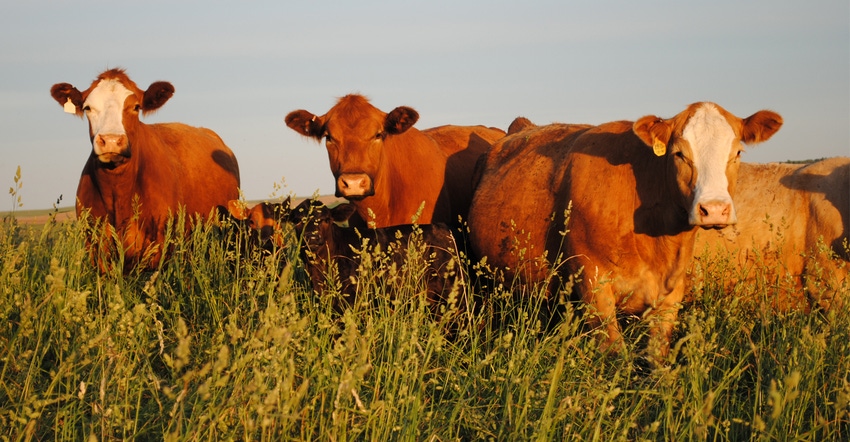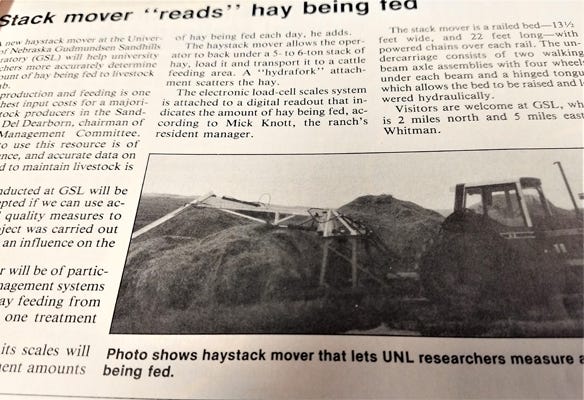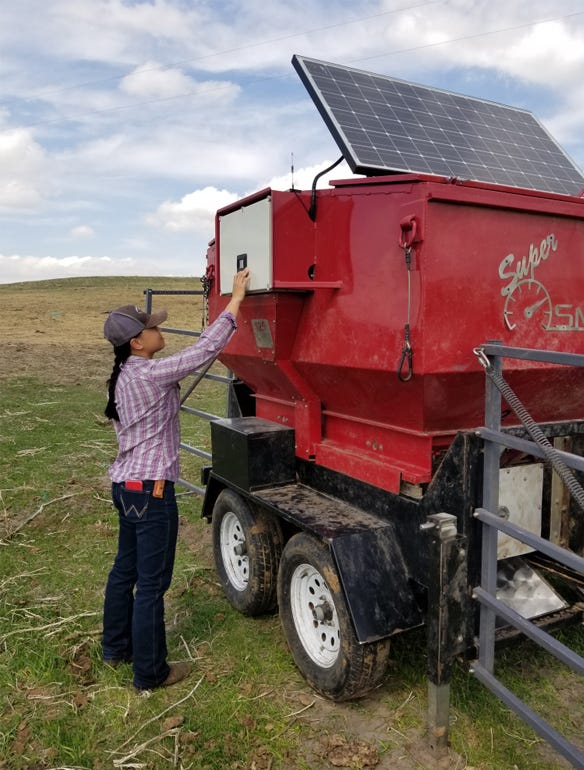
Editor’s note: In our column, Then and Now, we look at farm technologies, strategies, equipment, livestock, crops and treatments from our back issues of Nebraska Farmer, and discuss how things have changed and how they have stayed the same.
It was all about the upcoming Husker Harvest Days in the Sept. 2 issue of Nebraska Farmer in 1989. The magazine that month included a complete listing of activities being planned for the big farm show at Grand Island, but we were interested in a little article on page 37: “Stack mover ‘reads’ hay being fed.”
The story went into details about a new haystack mover that was being tested at the University of Nebraska's Gudmundsen Sandhills Laboratory that would help UNL researchers more accurately determine the amount of hay being fed to livestock at the lab.
Saving on hay
Acknowledging that hay costs are one of the big expenses in keeping a cow herd, Del Dearborn, then-chairman of the GSL management committee, noted that precise data was needed to identify exactly how much feed was going out to the herd.
“Research conducted at GSL will be more readily accepted if we can use accurate weight and quality measures to describe how a project was carried out when native hay has an influence on the data,” Dearborn said in the article. The stack mover was equipped with scales, making it possible to document the exact amount of hay being fed each day.
The scale stack mover allowed the operator to back under a 6-ton stack of hay, load it and transport it to the cattle-feeding area. A hydrafork attachment scattered the hay, and the electronic load-cell scales system attached to a digital readout indicated how much hay was being fed. The mover itself was a railed bed — 13.5 feet wide and 22 feet long — with powered chains over each rail.

READING THE FEED: This article published in the Sept. 2, 1989, issue of Nebraska Farmer touts a new haystack mover being used by researchers at GSL to calculate the amount of hay being fed to cows in research pastures.
We couldn’t help but think about how this high-tech feeding system 33 years ago was similar in nature to the new Smart Feeder system being used last summer to feed cows at GSL. Field editor Kevin Schulz wrote about the Smart Feeder, created by C-Lock Inc. of Rapid City, S.D., that was basically a solar-powered portable precision feeder.
Cows are equipped with electronic identification tags, and the feeder has a tag reader in each stanchion, so a cow enters a stanchion and the tag reader identifies the animal and dispenses a prescribed ration of feed for her into a trough. Each cow’s daily allotment is entered in the feeder’s computer system, so each cow can only receive the feed prescribed.
Individual rations
Travis Mulliniks, Nebraska Extension beef cattle nutritionist and range production systems specialist at West Central Research and Extension Center in North Platte, told Schulz that cows will try to cheat the system. Researchers have tracked cows that are coming into the stanchions 20, 30 or 40 times a day to get feed, but the feeding system tied to the EID tag only allows the cows to get the feed prescribed, otherwise they leave empty-handed, or with an empty mouth.
The Smart Feeder used by UNL has four individual bins allowing cattle their specific rations, so cattle need to learn which stanchion provides them with their ration. Mulliniks said that this training usually only takes a day or a few days for the cows to pick up. The training period takes place in smaller pens or paddocks, so researchers can make sure all animals have it figured out before entering a larger pasture.

FEEDING SMART: UNL graduate student Selby Boeman calibrates the scales on the Smart Feeder to make sure the programmed diets are being delivered to the cattle.
Even better, ranchers can monitor the system from their smartphone or tablet — unheard of 33 years ago — as long as there is connectivity. Where there isn’t connectivity, the data is stored on the feeder’s computer and can be downloaded or sent to the “cloud” for later analysis by the rancher.
The system can tell a rancher if there is a cow that is not eating. The system will also send an alert if there is a malfunction in the feeding equipment itself, such as if a conveyor stops working.
Because it is solar-powered, usage of the Smart Feeder is not limited to areas where there is electricity available. While the Smart Feeder does not replace good cow management, it does take the guesswork out of feeding cows, and will eliminate the problem of some cows overeating, while others go hungry.
At the time in 1989, the digital readout on the stack mover was a big leap forward for researchers in knowing the exact quantities being fed to research cows. But newer high-tech equipment, such as the Smart Feeder being tested now at GSL, is even more precise and takes advantage of the abilities of today’s ranchers to monitor systems remotely with a smartphone and to use solar energy to power the system.
Learn more at farmprogress.com/technology/science-steps-feed-range-cattle.
About the Author(s)
You May Also Like






